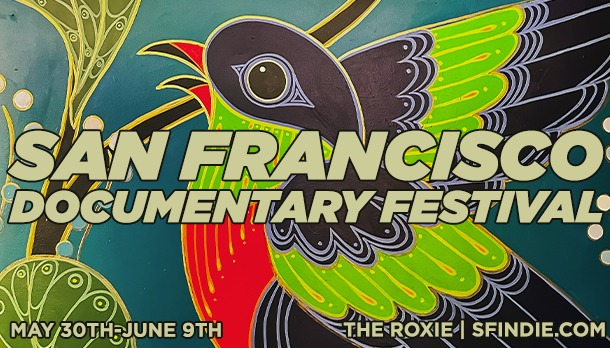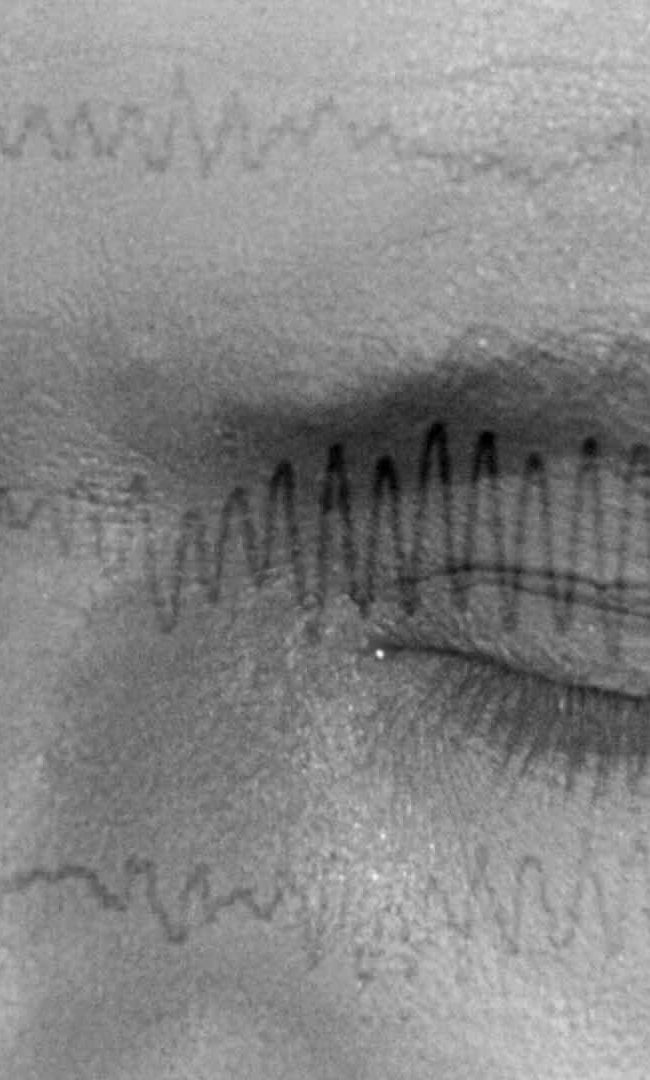It’s Time for SF DocFest, 2024 Edition

Can one lone entry stand-in for all others in a festival faux-preview (aka “curtain-raiser”)? If the documentary-in-question is Film is Dead. Long Live Film!—tracing the pathway of otherwise-lost or forgotten works saved from obscurity or obsolescence thanks to the dedication of private collectors and archivists—perhaps the notion is… perhaps? A distinct possibility? Is film, after all, dead? Or film-going? As in going-to-see-film-on-film (“illuminated celluloid” as opposed to a “digital presentation of zeros and ones” in a cinematic setting)? Not precisely dead… but certainly infrequent, with fewer opportunities for seeing 8mm, Super 8, 9.5mm, 16mm, Super 16, 35mm, 65mm and 70mm (and assorted formats in-between) with each passing year. Fortunately, for interested audiences, film collecting and film exhibition are essential, in-parallel, one to the other.
Film is Dead. Long Live Film![screening digitally, alas] is the latest documentary from Irish-born, U.S.-based filmmaker Peter Flynn. He visited a variation of this particular subject in an earlier work, The Dying of the Light(about film projection and projectionists), roughly a decade ago. Undoubtedly, from all available evidence, his affinity for the medium is genuine and he treats his film-obsessive subjects—Rick Prelinger, Skip Elsheimer, Ray Faiola, Louis DiCrescenzo, Stu Fink, Michael Lattavo, Geoffrey Curtis, Bob Furmanek, Ira Gallen and Stan Taffel, among others—with an optimal reverence, allowing them to guide a meandering pathway through their various efforts.
There was a time when film-collecting was a relatively pedestrian hobby. Many children (and adults) once had a selection of truncated 8mm versions of studio films released for living room screenings, long before home video. For most individuals of a certain age, their initial introduction to the tactile pleasures of handling 16mm occurred during the threading of educational films in a classroom setting. These days, such passions for private film-print collections are largely treated as a perversion. Indeed, the activities of many collectors of dupes—optically-duplicated prints or 35mm-to-16mm duped-down reductions—as well as discarded prints salvaged from dived dumpsters were treated by a number of studios (and, whenever added to the mix, law-enforcement) as illegal or nefarious. Yet, without the efforts of these industrious individuals across the decades, acquiring prints from school auctions or the Big Reel (and, more recently, eBay and elsewhere), a fair share of orphaned film history might’ve disappeared completely.
Film is Dead…, then, serves to celebrate these admirable individuals. [If truth be told, I am not an impartial observer (as the monthly bill for a climate-controlled storage facility containing roughly a thousand 16mm—and a few 35mm—prints can attest).] Even if their efforts haven’t produced an uncut Magnificent Ambersons or a surviving Four Devils print quite yet (if ever), the wonders they’ve found—and, not infrequently, preserved or restored independently or with the assistance of an academic, institutional, national or studio archive or even the Library of Congress—have been generally remarkable and occasionally unforgettable. In the shape and form of Film is Dead…, it is evident that the viewer is in the hands of a ‘maker with a deep fondness for cinema. At one juncture, for instance, a silent-era comedian makes a casual appearance for an indirect bridge from one interview to another. Charles Chaplin? Not him, exactly, but another star of the 1920s. Buster Keaton, then? Great as he is, not Keaton either. Must be Harold Lloyd? No and no, again. The one-and-only Harry Langdon lingers in this specific moment. Only a sincere cineaste would dwell on the peculiar visage of Langdon for a between-scene affect.
…
One (other) place, at least, that film-going and an adoration for cinema is alive and well is the San Francisco Documentary Festival, aka SF Docfest, roosting at the Roxie (and on the interwebs for those outside of the Bay Area) in its 23rd edition. This preview-in-disguise suitably serves as an additional ersatz recognition for filmmaker Chris Metzler’s incidental decade as one of the programmers for the event, crafting (in this latest edition) a non-fiction program vastly superior to all other recent Bay Area festivals combined. Despite the many highlights among the ninety-ish films in the selection, what follows is a handful of notable diversions within two narrow groupings: firstly, individual-portraits; secondly, place-portraits (which, in essence, are many-individual-portraits).
individual-portraits
The Donn of Tiki (2024) dir. Alex Lamb + Max Well
An overdue and most welcome biography of Ernest Raymond Beaumont Gantt aka Donn Beach (of Don the Beachcomber fame) with astounding Rankin and Bass-esque animation (bringing to “life” Gantt audio recordings) and interviews with exotic cocktail authority Martin Cate [of Smuggler’s Cove / Forbidden Island, long ago], artist Shag [Josh Agle] and author Jeff “Beachbum” Berry. One-of-three “Opening Night” films for the festival (followed by the Tiki Wonderlands party).
Deep Listening: The Story of Pauline Oliveros (2023) dir. Daniel Weintraub
A fascinating profile of Mills College alum Pauline Oliveros [natch] and, in part, the Deep Listening Band [also natch, given the title], which she formed with trombonist Stuart Dempster and assorted guests over the years, owing its origins to the so-called “Cistern Chapel” (or Fort Worden cistern in Port Townsend, Washington) which allowed for forty-five second reverberations within its cavernous construction. The documentary lingers liberally in the territory of a quote within the film, “I like to listen to things that people usually ignore.” Llisten, of course, and then reinterpret, compose (or improvise) and perform. Whatever happened to be happening historically in the musical realm, Oliveros was often there ahead of the rest with a focus on the rewards of listening deeply and intently. Her work with the San Francisco Tape Music Center and her pieces for accordion (particularly the album Accordian and Voice) should be more widely-known and, ideally, this documentary will do exactly that.
Art for Everybody (2024) dir. Miranda Yousef [+ Supervising Prod. Nora Chute]
Local-ish-(Placerville, CA)-boy-made-extremely-good, “Painter of Light” Thomas Kinkade’s unusual rise, predictable fall and an exploration of dark-ish non-“Light” artworks discovered in his vault. Largely structured in non-chronological order but beginning at his artistic beginnings and ending at the inevitable end. Art for Everybody is told primarily by his family and friends along with several critics and art professionals who try to provide some semblance of context for Kinkade’s unique success. Covers his pre-celebrity work as a background painter on Ralph Bakshi’s Fire and Ice and the development of his subsequent “brand” lifted from J.M.W. Turner, an artist with the art-world admiration Kinkade craved but failed to acquire in his lifetime (and, seemingly, never to occur). The “Centerpiece Film” selection for Docfest.
Naked Ambition (2024) dir. Dennis Scholl + Kareem Tabsch
“World’s prettiest” pin-up photographer (and model) Bunny Yeager from the perspective of her daughters, alongside Yeager’s working-relationships (in audio interviews) with her most famous model, the legendary Bettie Page, and talking-head remembrances from her frequent publisher, Hugh Hefner, as well as actor/screenwriter-fan Guinevere Turner, photographer-fan Bruce Weber, journalist-fan Larry King, burlesque-fan Dita Von Teese and author-fan (and ever-so-much more) Sarahjane Blum.
place-portraits
23 Mile(2024) dir. Mitch McCabe
Michigan-set political verité-esque diary-film with premiered at True / False from the director of the excellent CIVIL WAR SURVEILLANCE POEMS (PART I), YOUTH KNOWS NO PAIN and others. While the intersection of the November 2020 election and the half-year prior early-ish days of the pandemic, all in the midst of a “battleground” state, might strike conflicted viewers as “too soon” given the present repetition(s) of history, election-wise, McCabe’s vast familiarity with the surroundings and the people in the area—with intersections between BLM protesters and cosplaying patriots and other participants of other persuasions—is neither one thing nor the other. 23 MILE effectively portrays complicated individuals in challenging situations at a difficult time for everyone. A difficult time that persists, consequentially. One we appear committed to collectively deny its impact and requires persistent reminding. One-of-two “Closing Night” feature-lengths (as well as two “Closing” shorts, in this instance paired with Wake the Town), screening Thursday, 6-June, with the multi-talented filmmaker in-attendance.
Passing Through (2024) dir. Sarah Ingram
If you have no familiarity with Bombay Beach (a Salton Sea artist-community), Passing Through will make you want to visit. Or perhaps even relocate. A more eclectic bunch of motley art-makers and musicians and other oddballs you’ve rarely seen all gathered in one place. A year-‘round Burning Man without all of the temporary trappings, Bombay Beach reminds you of how purely and perfectly unusual certain towns of this world can be, not unlike Larrimah, Australia (as seen in Last Stop Larrimah).
— Jonathan Marlow| @aliasMarlow [Twitter ] @marlowesque [BlueSky]











